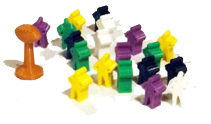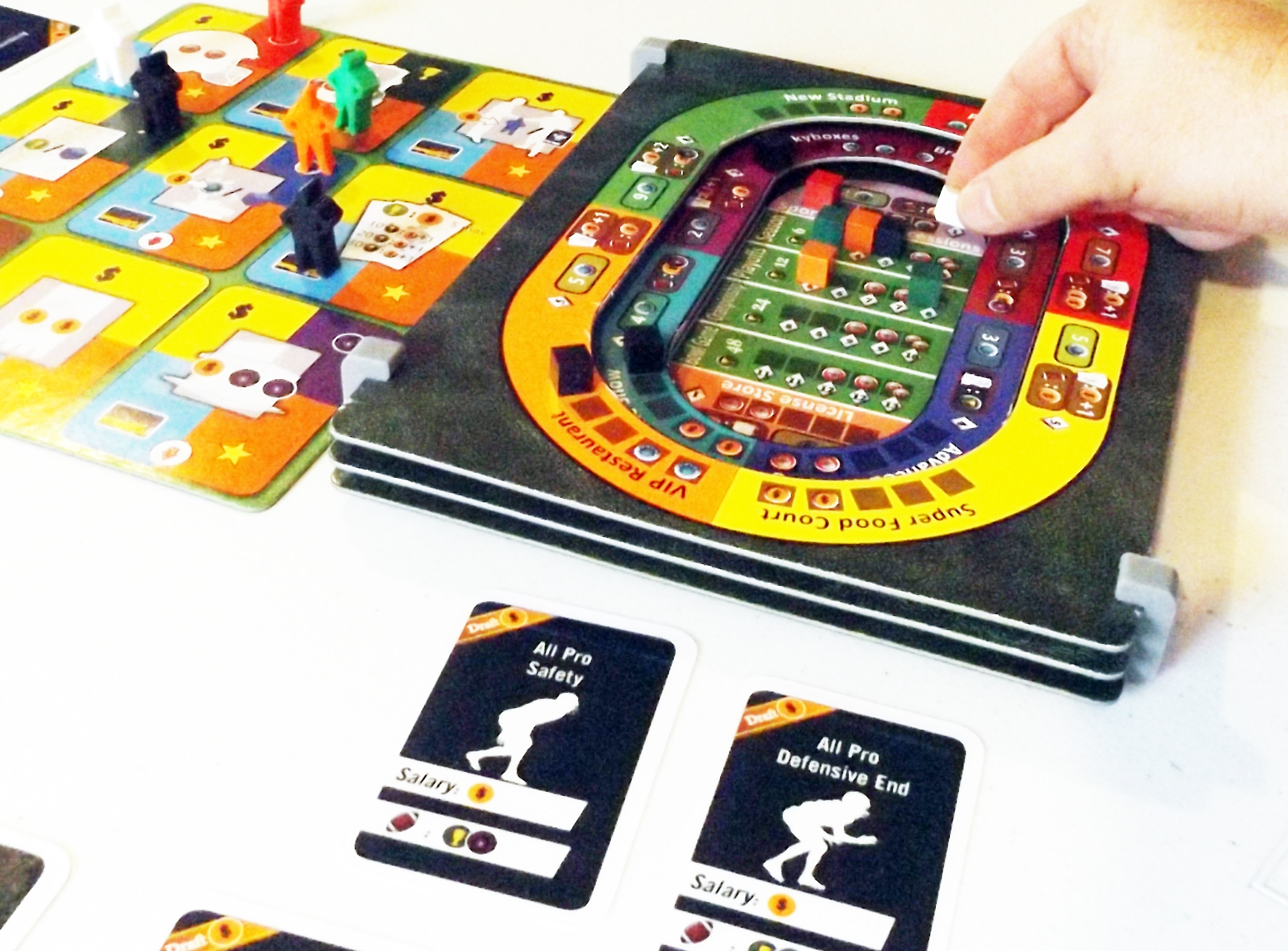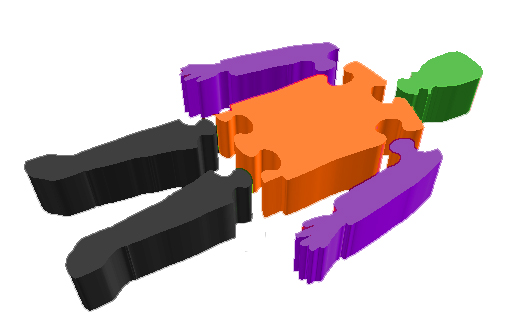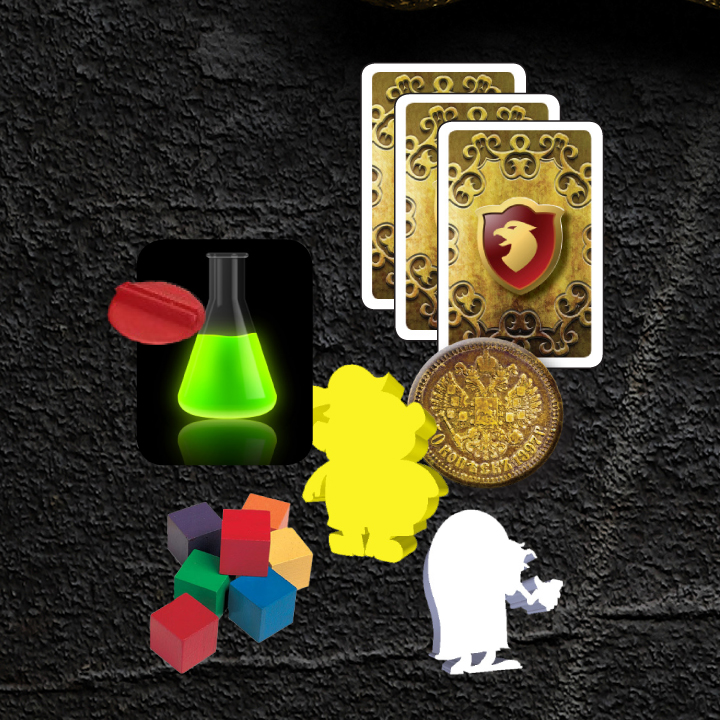Joe Magic is the self-publishing company of Mark Hanny, who has run a couple dozen Kickstarters to launch his games. His current Kickstarter, Traders & Raiders, has raised over $1100. He illustrates how a solo designer can reach an audience through self-publishing.
Today’s focus is on Mark’s 3D-printed components, which play a big role in elevating his games’ table presence. (He provided the images for this blog post.) I’ve previously mentioned that Scythe got me into board game design, and its cool mechs were a big part of that, so I was excited to know that Mark has experience with creating 3D components.

A great example of his work is the 3-level arena in Stadium, shown in the photo above. It’s a light-to-mediumweight worker placement game about running a stadium and football franchise. Mark 3D prints the supports that snap into the cardboard layers, which he manufactures with a die cutter. As shown to the right, the game also has plastic meeples with a silhouette that I don’t think I’ve seen before, and a cool little football that the players can grab.
Demise of Dr. Frankenstein likewise includes unique 3D components, in this case body parts that players assemble into monsters. In a nice thematic note, players draft these body parts from a graveyard. The game includes additional components, including a cute Igor token (as shown in the gallery below).
Demise of Dr. Frankenstein
Mark prints components on a Makerbot Replicator 2, which he considers best for creating silhouette-like tokens similar to those pictured above. It’s too slow for manufacturing thousands of units, and it might not have the accuracy required for components that require a precise fit or a high level of detail. Nonetheless, even with this 12-year-old printer, Mark is still able to make a few hundred game pieces for less than a dime each. That’s perfectly adequate for making prototypes, for promising enticing add-ons or stretch goals (as in the current Traders & Raiders kickstart), and for manufacturing the entirety of small production runs.
He has commented that 3D-printed components alone are only part of creating a “wow” factor. Getting attention to the table is only a first step in today’s market. Mark’s approach for taking it to the next level is integration: find clever ways of integrating the capabilities of 3D parts with the mechanics (as in the case of Frankenstein) and/or integrating the printed components with other kinds of components (as in the case of Stadium’s cardboard-plastic assembly).
In addition to the boost to table presence, I’m enticed by the practical fact that the STL files used by the printer are similar to what larger manufacturers expect to receive in preparation for a larger injection-mold process. Using a 3D printer for prototyping would therefore avoid the need to start from scratch when scaling up to a larger production run.
Have you any experience with creating games that have 3D-printed components? Feel free to post links to your work!


